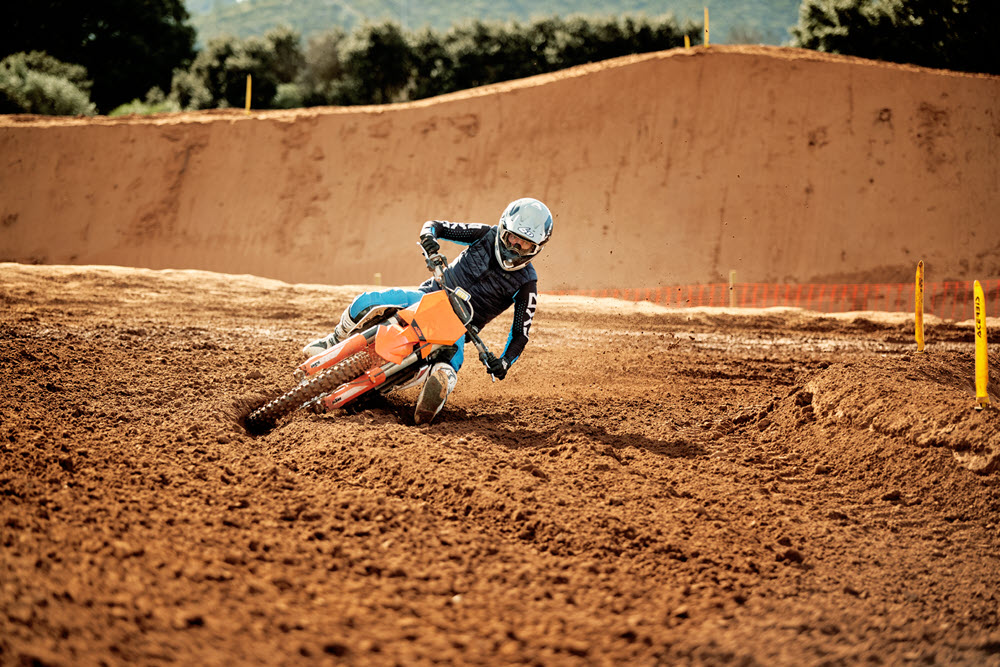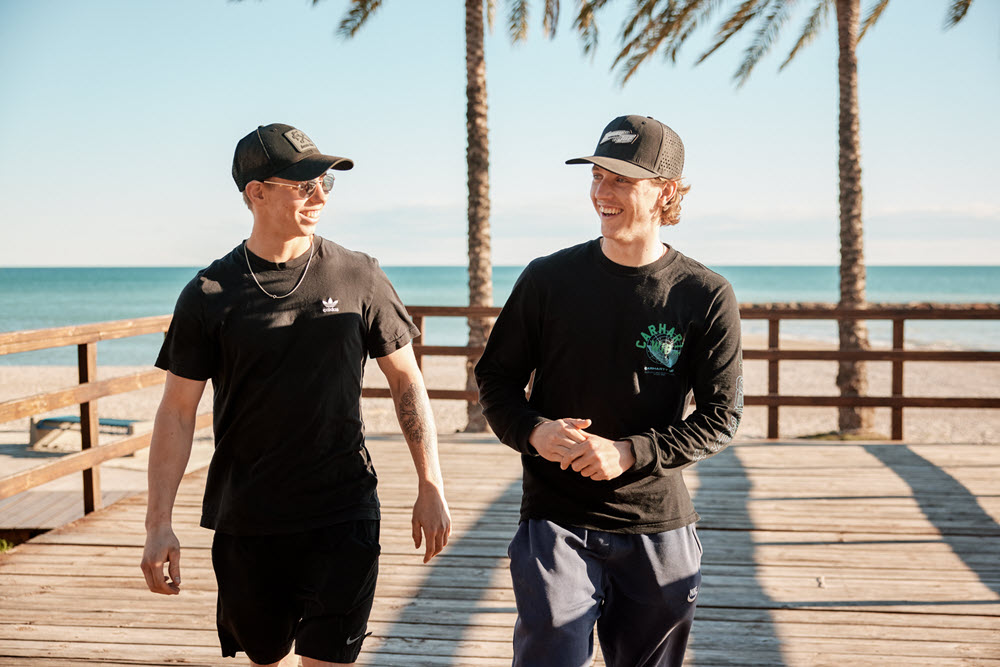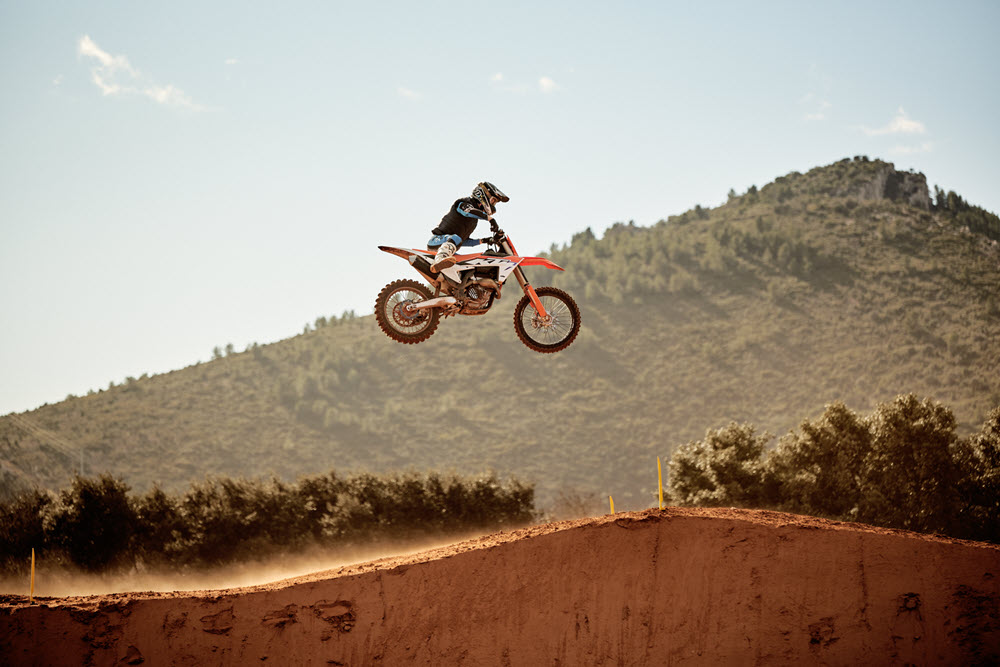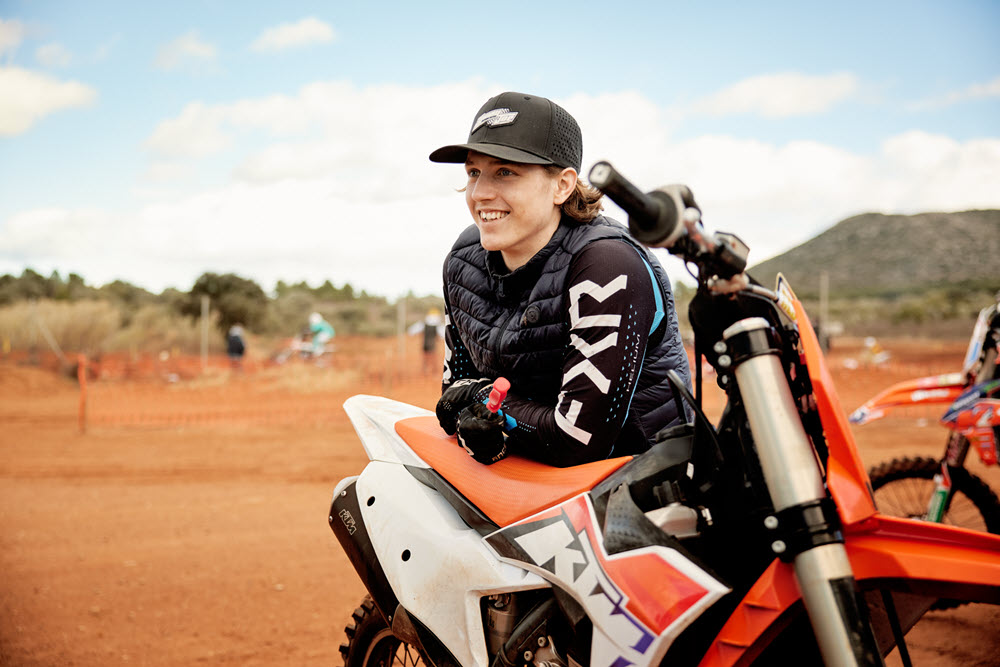While many people with haemophilia are diagnosed during infancy due to obvious bleeding and swelling symptoms, others – like William Kleemann and his brother Victor – only find out much later in life.
While presenting with less obvious symptoms may seem like a blessing, it can make diagnosis more elusive, posing a serious risk when severe injuries occur, and doctors aren’t quite sure what they’re dealing with.
“I was first diagnosed when I was 16, after my brother got an injury in motocross. I think the biggest deal was that we really found out too late. Victor was supposed to just have an easy surgery, then a lot went wrong and he was in the hospital for a long time.”
“He finally got tested for haemophilia after a long fight with the hospital. Then, after another long fight, it also led to me getting tested. After three surgeries, it was actually my mum that said, ‘I will not allow the doctors to take him for another surgery before we have the test for haemophilia.’”
“So that was when we first found out it was in the family. After he got the results back, everything went a little bit more smoothly because he got the medicine and it got better.”
“Luckily, he’s here today because he had a lot of blood loss in the hospital. They kept giving him [blood] thinner because they were scared that he would have a [blood clot] when they did the surgery. But in our case, that’s maybe the worst-case scenario, because when they did the surgeries and put him on the bed, he kept bleeding out.”
“When we got diagnosed, the doctors were really not happy that we were doing action sports and motocross.”
“When we got diagnosed, the doctors were really not happy that we were doing action sports and motocross. They kept telling my brother every day in the hospital – that if he kept going, he would die. And it made me sad because when I was visiting, I saw my brother was in a lot of pain. Because he had a dream, and I had a dream of becoming a professional motocross racer.”
“For us, the first light in the tunnel was a nurse that was really
good with us. She saw that we had been doing it all our life. And now,
we had finally found out about [the disease] and we can get the
medication that is needed to keep us safe. Or safer.
Then people wanted us to stop.”
“But in our case, we saw it as a positive because now we actually have something – if we get hurt, we can be more safe and we know how to handle the situation instead of what happened to my brother in the first case with the surgery. So now we have a solution to the problem.”

“At the start, I couldn’t really believe I had a disease. I’ve never really shown symptoms of it. So, in the start, I didn’t really believe it. But now that I’ve grown a little bit in it and I know how to handle it, it actually makes me more safe.”
“If I have a bad crash, I have the people around me, like mechanic or my trainer, the team – they know I always have a flamingo box with me, that if anything happens, [my medication] is in there. And they know if I need to be picked up by an ambulance and I’m unconscious, they will say to the medical team: ‘William has haemophilia and he needs to have his medicine as fast as possible.’”
“Now there’s a plan if anything happens. And I know that I will be as safe as a normal person.”
“It makes me feel more comfortable getting on the bike, even though I take the risk anyway. But now there’s a plan if anything happens. And I know that I will be as safe as a normal person.”
“My treatment is not weekly or monthly. It depends on when I get hurt or how I get hurt. I take it when I crash, when I have maybe a broken bone or something. Luckily I have something that lasts for about a week. So, I take it when I crash, when I get hurt, if I have maybe a broken bone or something like this.”


“Me and my brother are really close. Now that we both have the disease, he kind of [showed] the way for me in the sense of he took all the hard work. But I think it’s really good to have him to talk about it – what to do if I get hurt, and we work good as a team.”
“In 2022, I had a major crash, which resulted in three fractures
in my neck around the C6 [vertebra]. I was probably unconscious for
around five to seven minutes. For some miracle reason, I woke up
without my helmet and walked out of the track by myself.”
“Luckily my brother was there to help me get the medicine at the
right moment. He actually came to me, because my bike was all mangled.
It wasn’t even looking like a bike anymore. I was feeling wobbly when
walking. But I had a mechanic and there were some Danish people who
also know what to do and could call an ambulance.”
“My biggest goal – now that I will be doing the MX-2 world
championship – is to be a world champion or get to that level. But
right now, it’s getting back on the bike after the injury I had. Get
some hours on the bike, get comfortable, and be prepared for the
season.”
“A lot of people with haemophilia get told ‘you need to be inside, don’t do active sport, don’t do all this kind of stuff.’”
“But it’s also my goal to show that even though you have a disease, or you have a problem, that you can still do normal activities. Especially because a lot of people with haemophilia get told ‘you need to be inside, don’t do active sport, don’t do all this kind of stuff.’”
“At the same time, if you are active, you have a healthy body and your body reacts better with the medicine. Nowadays, the medicine is so good. And I want to be a symbol to show every other person with haemophilia or another chronic disease – that they don’t need to just sit at home and think they can’t do anything, because that’s not true.”
“I think I’m proof of saying that just because you have a
diagnosis, you don’t need to stop your dream or stop being active.
Because for sure it’s better for your body and it’s easier to take
the medicine when you have a healthy body. That’s been proven many
years ago.”
“In the future, I would hope to have more awareness of
haemophilia and make it easier to get diagnosed. Maybe to be able to
test for everything when you get a blood sample. Why not, if you’re
already getting your blood taken?”
“Even though my brother had to go through so much just to get tested, it was nearly impossible to get me tested for it.”
“Haemophilia is, of course, a rare disease, but in reality I don’t think it’s that rare. It’s just because we don’t test [for] it. Even though my brother had to go through so much just to get tested, it was nearly impossible to get me tested for it, because the doctor said ‘yeah, but it’s just a rare disease. Not that many have it in Denmark, so you probably don’t have it.’”
“In Denmark, our family raised the numbers [significantly] in a
week. Six of us tested positive, and there are only 100 people in
Denmark that have it. So that’s quite a major step by one family to
just put six more haemophilia patients in the program.”
“But if you don’t know about it, it’s difficult to treat properly.
If anything should happen, if you could avoid a big injury, it would
be a shame to go out that way if you can take some medicine and live
your life another day.”
“It would also be very good to have a treatment that, instead of
lasting for a week, maybe even lasts for a couple of years. Because
then you don’t have to worry about it or the people around you maybe
don’t need to worry as much.”

“It makes me feel more comfortable getting on the bike, even though I take the risk anyway. But now there’s a plan if anything happens. And I know that I will be as safe as a normal person.”
“My treatment is not weekly or monthly. It depends on when I get hurt or how I get hurt. I take it when I crash, when I have maybe a broken bone or something. Luckily I have something that lasts for about a week. So, I take it when I crash, when I get hurt, if I have maybe a broken bone or something like this.”
“Some people say there’s 1.5 seconds just in having the right mindset. But first of all, you have to believe.”
“Normally, when I think I have to go fast, that’s when I tend to get all cramped up. Last year I worked a lot on the mindset. It’s a big part of the game – some people say there’s 1.5 seconds just in having the right mindset. But first of all, you have to believe.”
“When something starts to go a little bit wrong, I either say ‘breathe’ to myself, or just ‘easy, find a flow, be like a wave.’ It’s okay if you get frustrated. Normally, you try to catch it before it goes completely off track.”
Rare diseases need more than rare solutions. We’re working towards improving treatment access for all patients living with haemophilia and other rare diseases around the world.